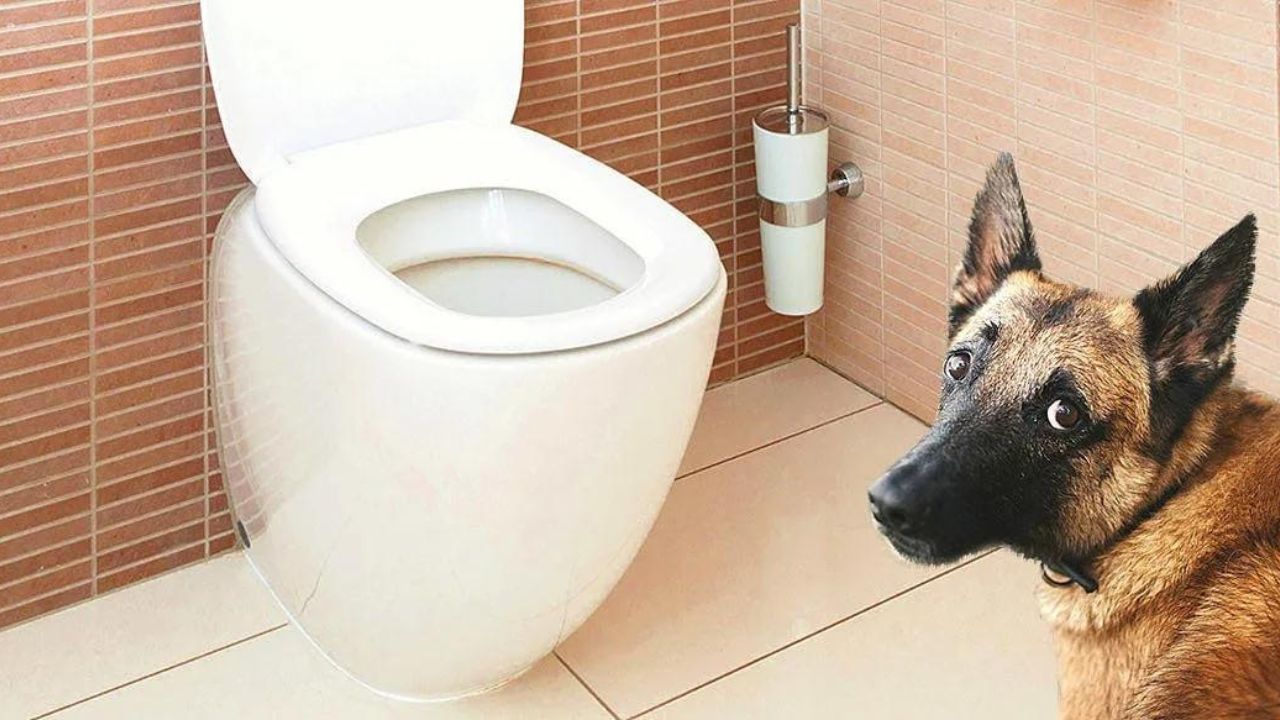
PuppiesCrate Training is one of the most effective and humane methods for teaching good habits and behaviours. It can help with potty training, obedience training, and managing behaviour problems such as separation anxiety or destructive chewing.
While some pet owners may be hesitant to use a crate, it can be a comfortable and safe space for dogs when done correctly. This handy guide will provide instruction on PuppiesCrate training, one of the most effective and humane methods for teaching puppies good habits and behaviours.
It can help with potty training, obedience training, and managing behaviour problems such as separation anxiety or destructive chewing. With patience, consistency, and positive reinforcement, you can successfully crate-train your furry friend and create a happy and healthy home environment for everyone.
What is Puppy Crate Training?
Puppy crate training teaches a young dog to feel comfortable and secure in a crate or cage. Cate training aims to provide a safe and comfortable space for puppies to rest and relax while teaching them good habits and behaviours. When done properly, crate training can help with potty training, separation anxiety, and behaviour management.
During crate training, a puppy is gradually introduced to the crate and taught to associate it with positive experiences, such as food or toys. The crate should be appropriately sized to provide enough room for the puppy to stand up, turn around, and lie comfortably. Puppies should be supervised in the crate and given regular potty breaks to prevent accidents.
Over time, as the puppy becomes more comfortable with the crate, it can be used for longer periods, such as during sleep or when the owner is away from home. The crate can become a safe and familiar space that the puppy associates with comfort and security. With patience and positive reinforcement, puppy crate training can be a successful and stress-free process for the puppy and owner.
The Crate Training Process: A Step-by-Step Guide
Here is a step-by-step guide to crate training a puppy:
Choose the right crate: Select a crate that is the appropriate size for your puppy to stand up, turn around, and lie down comfortably. The crate should be made of a durable material and have good ventilation. Consider adding a comfortable blanket or bed inside.
Introduce the crate: Start by placing the crate in a central location in your home, with the door open. Encourage your puppy to explore the crate independently, and reward them with treats and praise for entering or lying down inside.
Gradually increase time in the crate: Once your puppy is comfortable entering the crate, gradually increase the time they spend inside while the door is closed. Start with just a few minutes at a time, and gradually work up to longer periods.
Use positive reinforcement: Always use positive reinforcement when crate training. Reward your puppy with treats and praise for entering the crate, and provide verbal reassurance while they are inside. Never use the crate as a form of punishment.
Monitor potty breaks: Puppies have small bladders and will need frequent breaks, even in the crate. Take your puppy outside to potty before and after crate time, and provide opportunities for potty breaks during long periods inside the crate.
Use the crate for sleep: As your puppy becomes more comfortable, use it for sleep time. Place the crate in a quiet, dark room, and provide a comfortable bed or blanket.
Gradually increase crate time: Over time, gradually increase the amount of time your puppy spends in the crate as they become more comfortable and confident.
Remember, crate training is gradual, and every puppy is different. Be patient and consistent, and use positive reinforcement to create a safe and comfortable environment for your puppy to learn and grow in.
Puppy Crate Training Schedule Example
Crate training is effective for housebreaking puppies and helping them feel secure in their new home. Here’s an example of a crate training schedule for your new puppy:
Week 1:
- Day 1: Introduce your puppy to the crate by opening the door and placing treats inside. Allow your puppy to explore the crate on their terms.
- Day 2-3: Continue leaving treats in the crate, and start feeding your puppy near the crate to help them associate it with positive experiences.
- Day 4-5: Begin feeding your puppy in the crate with the door open. Praise and reward them when they go inside on their own.
- Day 6-7: Start closing the door to the crate while your puppy is eating. Please open the door immediately after they finish.
Week 2:
- Day 8-9: Begin short practising periods of confinement in the crate while you’re home. Start with 10-15 minutes and gradually increase the time.
- Day 10-11: Encourage your puppy to enter the crate by tossing treats inside. Once they are inside, close the door for short periods (up to 30 minutes).
- Day 12-13: Continue practising short periods of confinement, gradually increasing the time your puppy spends in the crate.
- Day 14: Your puppy should be comfortable spending up to an hour in the crate by now. Start leaving them in the crate for longer periods (up to two hours) while leaving the house.
Weak 3:
- Day 15-21: Continue practising longer periods of confinement, but give your puppy plenty of exercise and attention outside of the crate. Gradually increase your puppy’s time in the crate until it can comfortably stay there for several hours.
.Always make the crate a positive experience for your puppy by offering treats, toys, and praise when they enter it willingly. Never use the crate as a form of punishment, and always supervise your puppy when they are in the crate to ensure its safety.
Crate Training A Puppy At Night
Crate training a puppy at night can be challenging, but it’s an important part of housebreaking and helping your puppy learn to sleep through the night. Here are some tips for crate training your puppy at night:
Keep the crate close: During the first few nights, place the crate in your bedroom so your puppy can hear and smell you. This can help them feel more secure and prevent them from feeling lonely.
Create a bedtime routine: Establish a routine that includes quiet time before bed, such as a short walk or a few minutes of playtime. This can help your puppy settle down and prepare for sleep.
Make the crate comfortable: Add a soft blanket or towel and a few toys or chew treats to keep your puppy occupied. This can help your puppy feel more comfortable and relaxed in the crate.
Use positive reinforcement: Encourage your puppy to enter the crate independently by placing treats or toys inside. Praise and reward them when they go inside, and use a command like “crate” or “bed” to help them associate the crate with sleep time.
Start with short periods of confinement: When you first start crate training at night, begin with short periods of confinement and gradually increase the time. Avoid leaving your puppy in the crate for longer than a few hours, especially if they are still very young.
Be patient and consistent: Crate training takes time and patience, so be consistent with your training and reward your puppy for good behaviour. If your puppy cries or whines at night, resist the urge to take them out of the crate, as this can reinforce the behaviour. Instead, try comforting them from outside the crate by speaking softly or touching it.
Following these tips can help your puppy learn to sleep through the night and feel comfortable and secure in their crate.
Benefits Of Crate Training A Puppy
Crate training a puppy can have several benefits for both you and your furry friend. Here are some of the key benefits:
Helps with housebreaking: One of the main benefits of crate training is that it can help. Dogs naturally avoid soiling their sleeping area, so if your puppy is confined to an appropriately sized crate, they’ll be more likely to hold their bladder and bowels until you let them out.
Provides a safe and secure space: Crates provide a safe and secure space for your puppy to retreat when they need some alone time or want to relax. A crate can also help keep your puppy safe when you can’t supervise them, such as when you’re out of the house.
Reduces anxiety: Being confined to a crate can reduce anxiety in puppies, giving them a sense of security and helping prevent them from becoming overstimulated or overwhelmed.
Eases travel: If you plan to travel with your puppy, crate training can make the experience much easier. Your puppy will be more accustomed to being confined to a small space, and you can bring their crate with you to provide a familiar and secure environment.
Promotes good behaviour: Crate training can also help promote good behaviour in puppies. If your puppy learns that the crate is their sleeping and resting area, they’ll be less likely to chew on furniture or other household items or engage in other destructive behaviours.
Crate training can be a valuable tool for helping your puppy learn to behave well, feel secure, and be safe and comfortable in various situations.
How to choose the Perfect Crate?
Choosing the perfect crate for your puppy can be overwhelming, as many different types and sizes exist. Here are some tips to help you choose the right crate for your furry friend:
Consider your puppy’s size: Choose a large crate to stand up, turn around, and lie comfortably. If you have a puppy still growing, consider getting a crate with a divider panel that can be adjusted as they get bigger.
Choose the right type of crate: There are several types of crates available, including wire, plastic, and soft-sided crates. Wire crates are sturdy and provide good ventilation, while plastic crates are more enclosed and useful for travel. Soft-sided crates are lightweight and easy to transport but may not be as durable as others.
Think about your needs: Consider how and where you plan to use the crate. A portable crate may be the best option if you frequently travel with your puppy. A wire or plastic crate may be more suitable if you use the crate at home.
Check the safety features: Make sure the crate has a secure latch or locking mechanism to prevent your puppy from accidentally escaping. Check for sharp edges or other potential hazards that could harm your puppy.
Look for added features: Some crates have additional features, such as removable trays for easy cleaning, dividers for adjusting the size, or wheels for easy transportation.
By considering your puppy’s size, needs, and the safety of different crates, you can choose a safe and comfortable crate for your friend.
Conclusion
Crate training can be a valuable tool for helping your puppy learn good behaviour, feel secure, and be safe and comfortable in various situations. When preparing for crate training, choosing the right type and size is important as gradually introducing your puppy to the crate positively.
During the crate training, be patient and consistent, and use positive reinforcement to encourage good behaviour. With time and patience, your puppy can learn to love their crate and see it as a safe and comfortable space to retreat to when they need rest or alone time.







